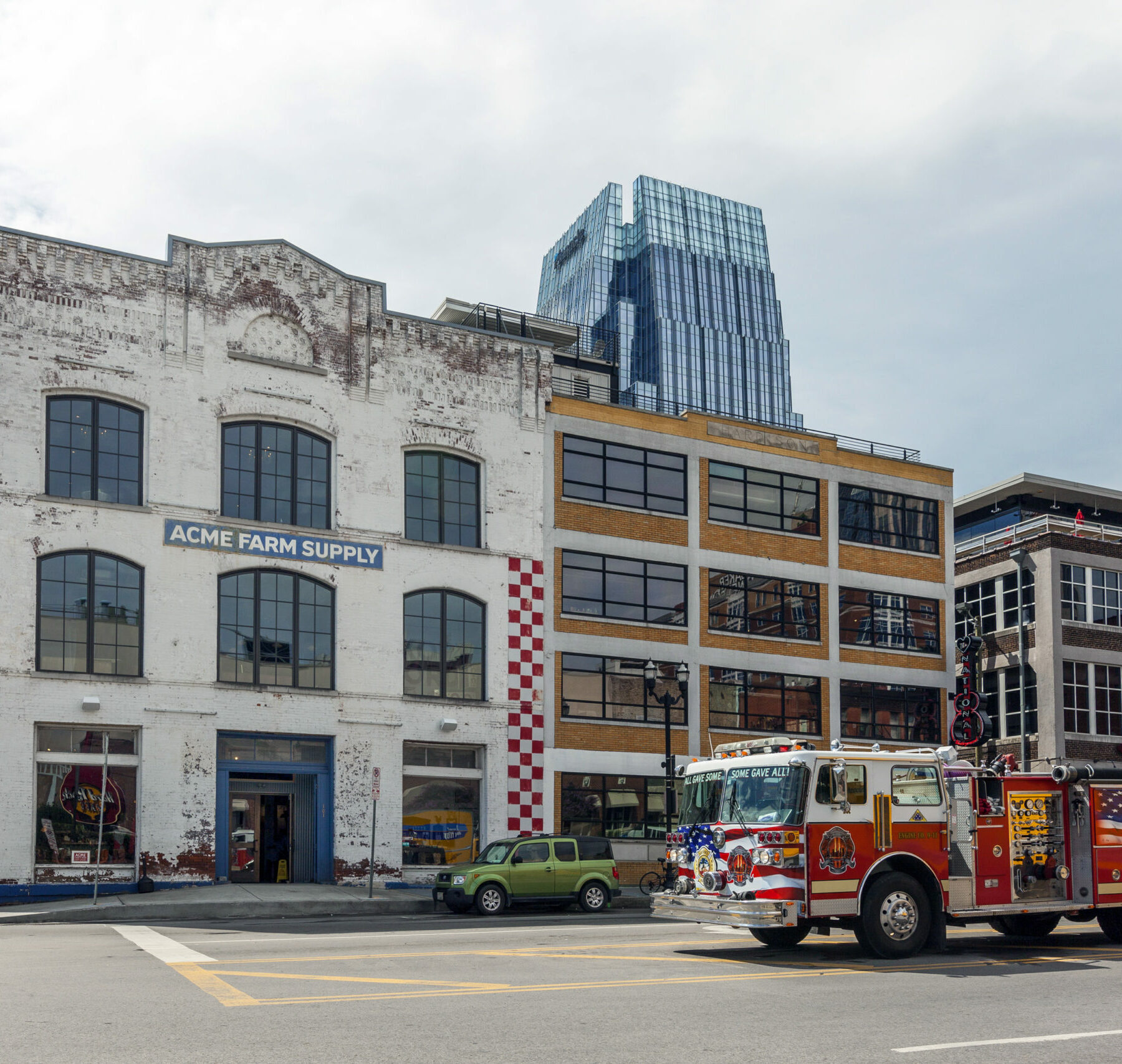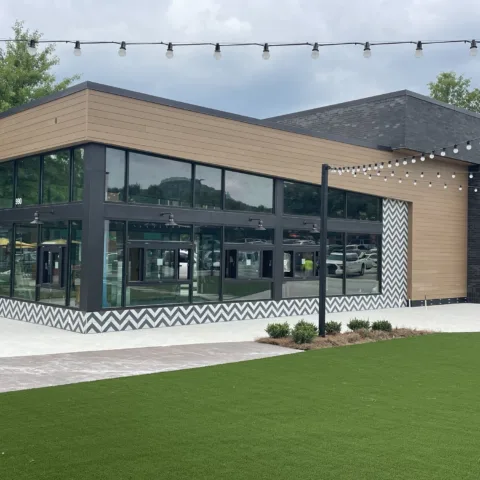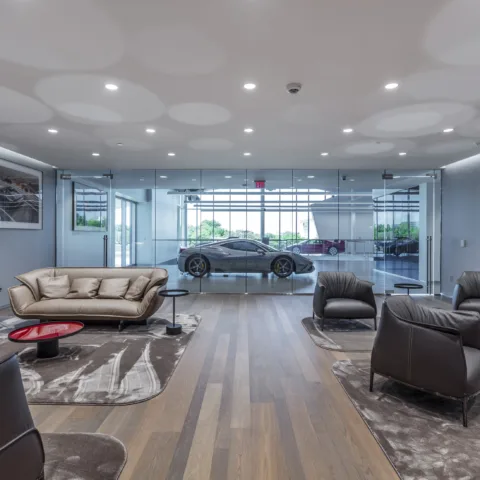In urban environments such as Nashville, where land is becoming increasingly scarce, the concept of adaptive reuse has gained immense popularity. As the demand for commercial spaces continues to rise, repurposing old buildings has become a compelling solution. Of course, navigating this exciting realm comes with its own set of challenges. Adaptive reuse projects are a lot like restoring a classic car. In many ways, you never know what you might find “under the hood.” You also want to retain a building’s historical charm while ensuring its longevity and operational functionality for years to come.
Crain Construction has been Nashville’s trusted partner in construction for over 90 years. We’ve witnessed the rise and fall of trends, the changing face of the city, and the incredible potential of adaptive reuse projects. Drawing from decades of experience, from the renovation of The Mall at Green Hills in the 1980s to our current endeavor of converting one level of a hotel parking garage to an additional floor of rooms, we’ve accumulated invaluable insights and best practices that we’re eager to share.
Why Choose Adaptive Reuse?
Adaptive reuse involves repurposing existing structures and breathing new life into old buildings to transform them into functional and aesthetically pleasing commercial spaces. This approach preserves a site’s historical and architectural integrity and offers several benefits for project owners. First, it’s a sustainable choice. By reusing existing structures, we minimize the environmental impact of construction and preserve valuable resources. Second, it’s often financially advantageous. Existing structures often come with lower land costs and can qualify for tax credits, making them a cost-effective proposition. Finally, it’s a chance to create unique, character-filled spaces that stand out.
Commercial Construction Best Practices for Adaptive-Reuse Projects
Establish Strong Communication and Early Collaboration
Solid relationships and effective communication between project owners, architects, and trade partners lay the foundation for a successful adaptive reuse project. At Crain, we prioritize collaborative partnerships, ensuring all stakeholders are on the same page from the project’s inception.
Portfolio Example: When renovating the Turnip Truck Grocery Store, we coordinated with over 20 engineers and contractors from across the country. To maintain seamless collaboration, we organized weekly conference calls that brought together all project stakeholders. This approach facilitated the continuous flow of information, fostering a comprehensive understanding of the diverse requirements of the project.
Invest in Pre-Construction for Risk Mitigation
Pre-construction is a key factor in the success of adaptive reuse projects. By thoroughly assessing potential risks and identifying value-add opportunities before breaking ground, we can significantly mitigate challenges that may arise during construction.
Portfolio Example: Thorough pre-planning and engineering were imperative before transforming the former bank headquarters into The Fairlane Hotel. This strategic preparation played a crucial role in our reconstruction endeavors, facilitating the installation of new mechanical systems such as rooftop air handling units. Additionally, it allowed for the integration of steam and chilled water to be piped throughout the building and connected to zoned units for more precise heating and cooling.
Navigate Unexpected Challenges with Expertise
Adaptive reuse projects often have unforeseen challenges, such as structural limitations, code compliance issues, or surprises hidden within the building materials. Our decades of experience have equipped us to navigate these challenges effectively. From innovative problem-solving to strategic decision-making, our team is well-versed in overcoming unexpected obstacles to ensure project success.
Portfolio Example: We transformed a warehouse constructed in 1959 into our corporate headquarters. Beyond overcoming unforeseen challenges like asbestos abatement, we seized opportunities for enhancement. Notably, we preserved the warehouse’s original river gravel and sand floors, refining and polishing them to fashion a contemporary aesthetic for our new office space.
Understand How to Balance Historic Preservation with Current Codes and Regulations
Achieving a harmonious balance between preservation best practices and current building codes and regulations is paramount in adaptive reuse. Our approach involves respecting the historical significance of a structure while ensuring it meets contemporary safety standards.
Portfolio Example: One of our most notable adaptive reuse endeavors is the Acme Feed & Seed building in downtown Nashville. After standing vacant for over two decades, this 1890s structure required substantial renovations to align with current codes and adhere to National Historic Register requirements.
Address Community Concerns Proactively and Transparently
Community engagement is a crucial aspect of adaptive reuse projects. Transparently communicating with the local community helps build trust and garner support, ensuring your project becomes a source of pride, not a point of contention.
Portfolio Example: The success of our Belle Meade Town Center renovation was significantly influenced by community engagement. Parking posed challenges for residents and business owners, so we donated a section of the site to help mitigate this issue. That donated space has now been transformed into a public street connector with pedestrian amenities and parallel parking, enhancing accessibility and fostering a collaborative community environment.
Crain Construction: A Leader in Commercial Renovation & Adaptive Reuse
If you’re considering an adaptive reuse project in Nashville, Crain Construction is here to help turn your vision into reality. Our team is dedicated to bringing new life to historic spaces while navigating the unique challenges of adaptive reuse. Connect with us, and let’s embark on a journey to build beautiful commercial spaces that stand the test of time.



